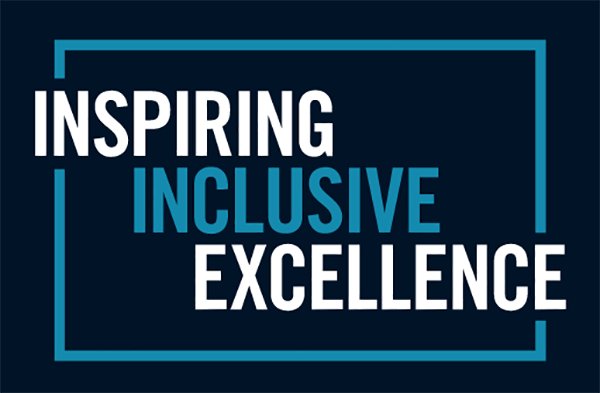An introduction to the structure of American Sign Language (ASL): Comparison to spoken languages and other signed languages, together with practice in using ASL for basic communication.
Course Search
LINB62H3 - Structure of American Sign Language
LINB98H3 - Supervised Introductory Research in Linguistics
This course provides an introduction to, and experience in, ongoing theoretical and empirical research in any field of linguistics. Supervision of the work is arranged by mutual agreement between student and instructor.
Exclusion: PSYB90H3 and ROP299Y
Recommended Preparation: 0.5 credit at the B-level in LIN or PLI courses
Breadth Requirements: Social and Behavioural Sciences
Course Experience: University-Based Experience
Note: Enrolment is limited based on the research opportunities available with each faculty member and the interests of the students. Students must complete and submit a permission form available from the Registrar's Office, along with an outline of work to be performed, signed by the intended supervisor. Priority will be given to students enrolled in the Specialist/Specialist Co-op programs in Linguistics or Psycholinguistics, and the Major/Major Co-op programs in Linguistics.
LINC02H3 - Phonology II
LINC10H3 - Linguistic Analysis and Argumentation
In this course, students will develop skills that are needed in academic writing by reading and analyzing articles regarding classic and current issues in Linguistics. They will also learn skills including summarizing, paraphrasing, making logical arguments, and critically evaluating linguistic texts. They will also learn how to make references in their wiring using the APA style.
Exclusion: LIN410H5, LIN481H1
Breadth Requirements: Arts, Literature and Language
Note: Priority will be given to students enrolled in any Linguistics programs.
LINC11H3 - Syntax II
LINC12H3 - Semantics: The Study of Meaning
An introduction to the role of meaning in the structure, function, and use of language. Approaches to the notion of meaning as applied to English data will be examined.
Exclusion: FREC12H3, FREC44H3, FRE386H, LIN241H, LIN247H, LIN341H
Breadth Requirements: History, Philosophy and Cultural Studies
LINC13H3 - Language Diversity and Universals
LINC28H3 - Language and Gender
An introduction to the research on differences between women and men in how they use language and how they behave in conversational interaction, together with an examination of the role of language in reflecting and perpetuating cultural attitudes towards gender.
Same as WSTC28H3
Exclusion: JAL355H, WSTC28H3
Breadth Requirements: Social and Behavioural Sciences
LINC29H3 - Advanced Quantitative Methods in Linguistics
This course provides students with advanced statistical methods in linguistics and psycholinguistics. Specifically, an introduction to multiple linear regression (MLR) and its applications in linguistic and psycholinguistic research are presented. The course covers the data analysis process from data collection, to visualization, to interpretation. The goal is to provide students with the theoretical and practical skills needed to reason about and conduct MLR analyses.
Exclusion: PSYC09H3, MGEC11H3
Recommended Preparation: Any prior math or statistics course
Breadth Requirements: Quantitative Reasoning
Course Experience: Partnership-Based Experience
Note:
- Priority will be given to students enrolled in a Linguistics or Psycholinguistics Specialist or Major degree. If additional space remains, the course will be open to all students who meet the prerequisites.
- This course will be run in an experiential learning format with students alternating between learning advanced statistical methods and applying that theory using a computer to inspect and analyze data in a hands-on manner. If the possibility exists, students will also engage in a consultancy project with a partner or organization in Toronto or a surrounding community that will provide students with data that require analysis to meet certain goals/objectives or to guide future work. Care will be taken to ensure that the project is of linguistic/psycholinguistic relevance. If no such opportunity exists, students will conduct advanced exploration, visualization, and analysis of data collected in our laboratories. Together, managing the various aspects of the course and sufficient interactions with students leads to this course size restriction.
LINC35H3 - Introduction to Computational Linguistics
This course focuses on computational methods in linguistics. It is geared toward students with a background in linguistics but minimal background in computer science. This course offers students a foundational understanding of two domains of computational linguistics: cognitive modeling and natural language processing. Students will be introduced to the tools used by computational linguists in both these domains and to the fundamentals of computer programming in a way that highlights what is important for working with linguistic data.
Corequisite: LINB29H3
Exclusion: (LINB35H3), LIN340H5(UTM), LIN341H5(UTM)
Breadth Requirements: Quantitative Reasoning
LINC47H3 - Pidgin and Creole Languages
A study of pidgin and Creole languages worldwide. The course will introduce students to the often complex grammars of these languages and examine French, English, Spanish, and Dutch-based Creoles, as well as regional varieties. It will include some socio-historical discussion.
Same as FREC47H3.
Exclusion: FREC47H3, LIN366H
Breadth Requirements: Arts, Literature and Language
LINC61H3 - Structure of a Language
An introduction to the phonetics, phonology, word-formation rules, syntax, and script of a featured language other than English or French. Students will use the tools of linguistic analysis learned in prior courses to examine the structural properties of this language. No prior knowledge of the language is necessary.
Exclusion: LIN409H
Breadth Requirements: Arts, Literature and Language
LINC98H3 - Supervised Research in Linguistics
This course provides an opportunity to build proficiency and experience in ongoing theoretical and empirical research in any field of linguistics. Supervision of the work is arranged by mutual agreement between student and instructor. For any additional requirements, please speak with your intended faculty supervisor. Students must download the Supervised Study Form, that is to be completed with the intended faculty supervisor, along with an agreed-upon outline of work to be performed., The form must then be signed by the student and the intended supervisor and submitted to the Program Coordinator by email or in person.
Note: This course does not satisfy any Linguistics program requirements.
Breadth Requirements: Social and Behavioural Sciences
Note: 1. Priority will be given to students enrolled in a Specialist or Major program in Linguistics or Psycholinguistics. 2. Students who have taken the proposed course cannot enroll in LINB98H3. 3. Enrollment will depend each year on the research opportunities available with each individual faculty member and the interests of the students who apply for enrollment.
LIND01H3 - Independent Study in Linguistics
Independent study and research in an area of interest to the student. Students must obtain consent from a supervising instructor before registering. Interested students should contact the Undergraduate Assistant for Linguistics for further information.
Course Experience: University-Based Experience
Note: Students must complete and submit a Supervised Study Form available at the Office of the Registrar.
LIND02H3 - Independent Study in Linguistics
Independent study and research in an area of interest to the student. Students must obtain consent from a supervising instructor before registering. Interested students should contact the Undergraduate Assistant for Linguistics for further information.
Course Experience: University-Based Experience
Note: Students must complete and submit a Supervised Study Form available at the Office of the Registrar.
LIND03H3 - Independent Study in Linguistics
Independent study and research in an area of interest to the student. Students must obtain consent from a supervising instructor before registering. Interested students should contact the Program Supervisor for Linguistics.
Course Experience: University-Based Experience
Note: Students must complete and submit a Supervised Study Form available at the Office of the Registrar.
LIND07Y3 - Independent Study in Linguistics
A reading and research independent study course on a topic of interest to the student. Students must obtain consent from a supervising instructor before registering. Interested students should contact the Undergraduate Assistant for Linguistics for further information.
Exclusion: LIN495Y
Course Experience: University-Based Experience
Note: Students must complete and submit a Supervised Study Form available at the Office of the Registrar.
LIND09H3 - Phonetic Analysis
LIND11H3 - Advanced Sociolinguistic Theory and Method
This course is concerned with modern sociolinguistic theory as well as methods of conducting sociolinguistic research including data collection and the analysis of sociolinguistic data. The theoretical approaches learned include discourse analysis, language variation, conversation analysis, and variationist sociolinguistics.
Exclusion: LIN456H1, LIN351H1, LIN458H
Breadth Requirements: Social and Behavioural Sciences
Note: Priority will be given to students in the Linguistics program.
LIND29H3 - Linguistic Research Methodologies
This course focuses on research methodologies (interviews, corpus collection, surveys, ethnography, etc.). Students conduct individual research studies in real-life contexts.
Breadth Requirements: Arts, Literature and Language
Note: Topics will vary each time the course is offered. Please check with the department's Undergraduate Assistant or on the Web Timetable on the Office of the Registrar website for details regarding the proposed subject matter.
LIND46H3 - Field Methods in Linguistics
Practice in language analysis based on elicited data from second language learners and foreign speakers. Emphasis is put on procedures and techniques of data collection, as well as theoretical implications arising from data analysis.
Exclusion: (FRED46H3), JAL401H
Recommended Preparation: LINC02H3 and LINC11H3
Breadth Requirements: Arts, Literature and Language
MATA02H3 - The Magic of Numbers
A selection from the following topics: the number sense (neuroscience of numbers); numerical notation in different cultures; what is a number; Zeno’s paradox; divisibility, the fascination of prime numbers; prime numbers and encryption; perspective in art and geometry; Kepler and platonic solids; golden mean, Fibonacci sequence; elementary probability.
Breadth Requirements: Quantitative Reasoning
Note: MATA02H3 is primarily intended as a breadth requirement course for students in the Humanities and Social Sciences.
MATA22H3 - Linear Algebra I for Mathematical Sciences
A conceptual and rigorous approach to introductory linear algebra that focuses on mathematical proofs, the logical development of fundamental structures, and essential computational techniques. This course covers complex numbers, vectors in Euclidean n-space, systems of linear equations, matrices and matrix algebra, Gaussian reduction, structure theorems for solutions of linear systems, dependence and independence, rank equation, linear transformations of Euclidean n-space, determinants, Cramer's rule, eigenvalues and eigenvectors, characteristic polynomial, and diagonalization.
Exclusion: MATA23H3, MAT223H, MAT240H
Breadth Requirements: Quantitative Reasoning
Note: Students are cautioned that MAT223H cannot be used as a substitute for MATA22H3 in any courses for which MATA22H3 appears as a prerequisite.
MATA23H3 - Linear Algebra I
Systems of linear equations, matrices, Gaussian elimination; basis, dimension; dot products; geometry to Rn; linear transformations; determinants, Cramer's rule; eigenvalues and eigenvectors, diagonalization.
Exclusion: MATA22H3, MAT223H
Breadth Requirements: Quantitative Reasoning
MATA29H3 - Calculus I for the Life Sciences
A course in differential calculus for the life sciences. Algebraic and transcendental functions; semi-log and log-log plots; limits of sequences and functions, continuity; extreme value and intermediate value theorems; approximation of discontinuous functions by continuous ones; derivatives; differentials; approximation and local linearity; applications of derivatives; antiderivatives and indefinite integrals.
Exclusion: (MATA20H3), (MATA27H3), MATA30H3, MATA31H3, (MATA32H3), MATA34H3, MAT123H, MAT124H, MAT125H, MAT126H, MAT133Y, MAT137H5 and MAT139H5, MAT157H5 and MAT159H5, JMB170Y
Breadth Requirements: Quantitative Reasoning
MATA30H3 - Calculus I for Physical Sciences
An introduction to the basic techniques of Calculus. Elementary functions: rational, trigonometric, root, exponential and logarithmic functions and their graphs. Basic calculus: limits, continuity, derivatives, derivatives of higher order, analysis of graphs, use of derivatives; integrals and their applications.
Exclusion: (MATA20H3), (MATA27H3), MATA29H3, MATA31H3, (MATA32H3), MATA34H3, MAT123H, MAT124H, MAT125H, MAT126H, MAT133Y, MAT137H5 and MAT139H5, MAT157H5 and MAT159H5, JMB170Y
Breadth Requirements: Quantitative Reasoning
MATA31H3 - Calculus I for Mathematical Sciences
A conceptual introduction to Differential Calculus of algebraic and transcendental functions of one variable; focus on logical reasoning and fundamental notions; first introduction into a rigorous mathematical theory with applications. Course covers: real numbers, set operations, supremum, infimum, limits, continuity, Intermediate Value Theorem, derivative, differentiability, related rates, Fermat's, Extreme Value, Rolle's and Mean Value Theorems, curve sketching, optimization, and antiderivatives.
Exclusion: (MATA20H3), (MATA27H3), MATA29H3, MATA30H3, (MATA32H3), MATA34H3, MAT123H, MAT124H, MAT125H, MAT126H, MAT133Y, MAT137H5 and MAT139H5, MAT157H5 and MAT159H5, JMB170Y
Breadth Requirements: Quantitative Reasoning
MATA34H3 - Calculus for Management
This is a calculus course designed primarily for students in management. The main concepts of calculus of one and several variables are studied with interpretations and applications to business and economics. Systems of linear equations and matrices are covered with applications in business.
Exclusion: MATA29H3, MATA30H3, MATA31H3, MATA33H3, MATA35H3, MATA36H3, MATA37H3, MAT133Y
Breadth Requirements: Quantitative Reasoning
Note: Students who are pursuing a BBA degree or who are interested in applying to the BBA programs or the Major Program in Economics must take MATA34H3 for credit (i.e., they should not take the course as CR/NCR).
MATA35H3 - Calculus II for Biological Sciences
A calculus course emphasizing examples and applications in the biological and environmental sciences. Discrete probability; basic statistics: hypothesis testing, distribution analysis. Basic calculus: extrema, growth rates, diffusion rates; techniques of integration; differential equations; population dynamics; vectors and matrices in 2 and 3 dimensions; genetics applications.
Exclusion: (MATA21H3), (MATA33H3), MATA34H3, MATA36H3, MATA37H3, MAT123H, MAT124H, MAT125H, MAT126H, MAT133Y, MAT137H5 and MAT139H5, MAT157H5 and MAT159H5, JMB170Y,(MATA27H3)
Breadth Requirements: Quantitative Reasoning
Note: This course will not satisfy the Mathematics requirements for any Program in Computer and Mathematical Sciences, nor will it normally serve as a prerequisite for further courses in Mathematics. Students who are not sure which Calculus II course they should choose are encouraged to consult with the supervisor(s) of Programs in their area(s) of interest.
MATA36H3 - Calculus II for Physical Sciences
This course is intended to prepare students for the physical sciences. Topics to be covered include: techniques of integration, Newton's method, approximation of functions by Taylor polynomials, numerical methods of integration, complex numbers, sequences, series, Taylor series, differential equations.
Exclusion: (MATA21H3), MATA35H3, MATA37H3, MAT123H, MAT124H, MAT125H, MAT126H, MAT133Y, MAT137H5 and MAT139H5, MAT157H5 and MAT159H5, JMB170Y
Breadth Requirements: Quantitative Reasoning
Note: Note: Students who have completed MATA34H3 must still take MATA30H3


